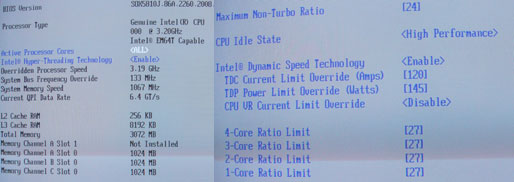2 - The Tylersburg perplexity
The Tylersburg perplexity
It was early 2007 when rumors started surfacing that the Core i7 processors would get housed on the Tylersburg chipset.
 The Tylersburg chipset is a mainboard chipset product based on the 65 nanometer fabrication process that is designed to replace the Intel Bearlake family of chipsets. Tylersburg will serve as the pride and joy of motherboards designed for Intel's processors based on the Nehalem / Core i7 architecture.
The Tylersburg chipset is a mainboard chipset product based on the 65 nanometer fabrication process that is designed to replace the Intel Bearlake family of chipsets. Tylersburg will serve as the pride and joy of motherboards designed for Intel's processors based on the Nehalem / Core i7 architecture.
Now, nothing is simple in the land of chip creations, so Intel decided to create several SKUs based on the Tylersburg chipset, each Tylersburg chipset will get an extra code, EP for efficient performance servers, EN for entry servers and WS for workstations.
Next to that from what we learned Intel planned to have different variants of a single chipset for each platform. Intel currently names the chipsets Tylersburg-36D, Tylersburg-36S and Tylersburg-24D. Tylersburg-36D is the chipset of choice for dual-socket Tylersburg EP and WS platforms. However, Tylersburg WS makes use of dual Tylersburg-36D chipsets for enhanced expansion.
- Tylersburg-24S 24 lines PCI express, one system bus Intel quick path;
- Tylersburg-24D 24 lines PCI express, two system busses Intel quick path;
- Tylersburg-36S 36 lines PCI express, one system bus Intel quick path;
- Tylersburg-36D 36 lines PCI express, two system busses Intel quick path.
Tylersburg-24D will find its way into the Tylersburg EN (Entry servers) platform. Intels single-processor Garlow WS platform will receive a Nehalem makeover with a Tylersburg WS (workstation) platform. Intel plans to equip one single processor Tylersburg WS platforms with the Tylersburg-36S chipset.
Intels Core i7 processor will drop into Tylersburg WS platforms. You know what, forget about the above .. just remember Tyler burg and thus X58. Much easier.
Some fundamental changes
There are some distinctive new features about the Core i7 processor that make some challenging new design features for the mainboard.
We explained in the Core i7 article that QuickPath replaces the Frontside Bus (FSB) and Northbridge combo. What you need to be aware of is that it also takes over the role of allowing the CPU to communicate directly with other system components, busses and controllers such as the PCI Express controller and DDR3 memory which is not only a physical yet fundamental change in architecture.
This also changes our concept and understanding of the system clocks. All motherboard busses and components are driven from a single 133.33 MHz base clock. The resulting component speed values are generated by applying a multiplier value to this base clock.

Examples:
- CPU speed -- When multiplied by the system base clock speed (default 133.33 MHz) gives the CPU frequency. Four multipliers are used to define different speeds based on the number of active CPU cores. But a Core i7 965 processor is driven like this 133.33 MHz x 24mp = 3.2 GHz, fairly easy to understand we think.
- Memory speed -- When multiplied by the system base clock speed gives the memory frequency. For example a Memory Multiplier of 10 times the base clock of 133.33 MHz results in a memory frequency of 1333 MHz.
Since that Core i7 processor communicates directly with memory, thus the controller is now located into the CPU, and no longer in the motherboard chipset. This required an additional set of inter connections to the motherboard.
